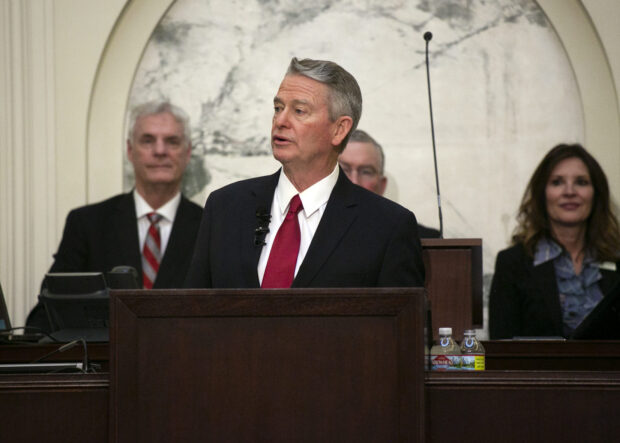
Gov. Brad Little urged self-isolating Idahoans who are experiencing cabin fever not to break the stay-home order early, or risk a second wave of coronavirus cases.
Little issued the warning Tuesday afternoon during a one-hour telephone town hall meeting coordinated by AARP Idaho.
On March 25, Little issued a statewide-stay home order. It remains in effect until 11:59 p.m. April 15 unless it is extended, rescinded or modified.
“Our goal is to get to some sense of normalcy as soon as possible,” Little said. “But if we try and do it too soon we could have another wave or another bump in stresses in our health care system that could conceivably be worse because we’ve already got community spread. We know we’ve got (spread) in … Blaine County, we’ve got it in Kootenai County, we’ve got it in the Treasure Valley. We’ve literally got it all over. So, if we take our foot off the gas as far as the stay-at-home order, we could have a spike.”
Even with last week’s order, Little stressed that the number of confirmed cases will continue to increase in the short term.
“I want to remind everybody when we put the stay-home order in place, we know it was going to be 12, 13, 14 days before we started seeing the results of that,” Little said.
Little said the order could begin to result in a slowdown in new cases in about nine days, or about April 8.
But because the state issued a March 19 isolation order in Blaine County, Little said the spread may slow there sooner if residents adhere to social distancing and isolation.
“We should be seeing the dividends of the stay-home order pretty soon because the first one was in Blaine County,” Little said.
Over the past several weeks, the novel coronavirus pandemic has disrupted life all over the world, leading to the cancellation of schools and professional sporting events, closures of businesses and stay-home orders in Idaho and other states.
As in each of the two previous weeks, Little fielded questions from Idahoans who called into the telephone town hall meeting. Many people asked about a lack of testing and health care capacity. But a recurring theme was the state’s goals and timelines, and when Idahoans can look for a flattening of the curve.
“I hate to say this, it depends. It will not be the spigot is on or the spigot is off,” Little said. “When 9/11 happened, we did a lot of things in travel and commerce and those things were lifted in stages as things went along. I fully anticipate that is what we will do with this.”
Little was joined on the call by Idaho Department of Health and Welfare Director Dave Jeppesen and Idaho Department of Labor Director Jani Revier.
“The faster we get through with this, the sooner we will be able to return to the incredible prosperity that we had in Idaho. That is my goal,” Little said. “I don’t want to do anything to preclude a robust recovery but a premature attempt at a robust recovery might even have greater negative ramifications than what has taken place in other areas.”
Confirmed cases increase
As of 5 p.m. Tuesday, the state’s coronavirus website and the state’s health districts reported 528 coronavirus cases. That’s an increase of 109 new cases statewide, or a 26 percent increase, compared to the 419 cases reported Monday.
The state also confirmed another COVID-19 death Tuesday, bringing the statewide total to nine.
The state was reporting confirmed cases in 27 of Idaho’s 44 counties Tuesday.
As of 5 p.m. Tuesday afternoon, the Idaho counties with the most confirmed cases were Ada (195), Blaine (192), Canyon (53) and Kootenai (30).
